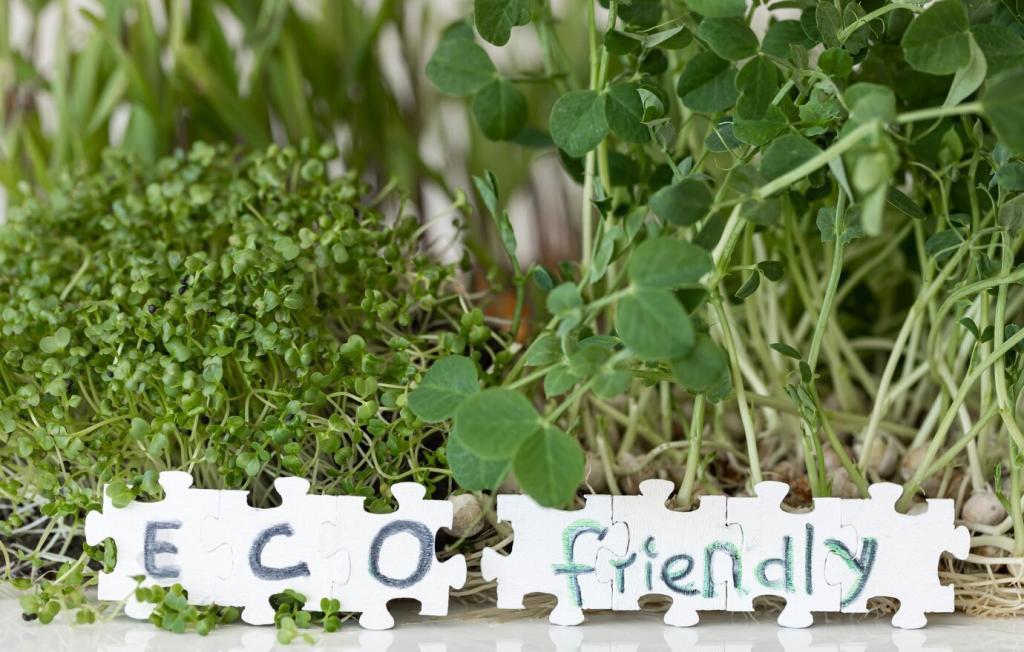Smart Solutions for Urban Space Gardening
Urban environments present unique challenges and opportunities for those seeking to cultivate vibrant green spaces. With limited room and an ever-growing population, city dwellers are increasingly turning to innovative gardening practices that maximize the utility of their available space. Smart solutions for urban space gardening not only help to bring nature closer to home but also contribute to improved air quality, well-being, and local food production. Discover how technology, thoughtful design, and sustainable practices are transforming urban landscapes into lush, productive havens for people and plants alike.

Maximizing Limited Urban Spaces
Vertical gardening is revolutionizing the way city residents approach limited space. By growing plants upward along walls, fences, or specially designed structures, gardeners can dramatically increase their productive area without increasing their footprint. These systems can be as simple as repurposed pallets or as high-tech as automated living green walls with built-in irrigation and lighting. Vertical gardening allows for the cultivation of diverse plants, including leafy greens, herbs, fruits, and even flowers, within urban settings. Not only does it save space, but it also creates striking aesthetic features, improves air quality, and can provide better plant health by exposing leaves to more consistent sunlight and airflow.
Integrating Technology in Gardening
Automated Irrigation Systems
Water management is crucial in urban gardening, where access can be limited and efficiency is prized. Automated irrigation systems provide a solution by delivering the right amount of water at precisely timed intervals, ensuring consistent moisture without the risk of over- or under-watering. Many modern systems are equipped with soil moisture sensors, weather data integration, and remote control capabilities via smartphone apps. With these tools, gardeners can tailor watering schedules to specific plant needs, conserve water, and reduce maintenance time, all while ensuring optimal plant growth. This technological advancement is especially valuable on balconies, rooftops, and vertical gardens where manual watering may be challenging or inconvenient.
Smart Lighting Solutions
Limited access to natural sunlight often hampers urban gardening efforts, especially in dense city environments or inside apartments. Smart grow lights are transforming indoor and shaded space gardening by providing plants with the exact spectrum and intensity of light they need to thrive. Advanced LED systems come with programmable settings to simulate natural day and night cycles, promote photosynthesis, and even support flowering and fruiting for crops. Some systems can be controlled remotely, allowing users to adjust light levels based on plant growth stages or real-time monitoring data. These innovations make it possible to grow robust, healthy plants year-round, regardless of outdoor conditions or space limitations.
Mobile Gardening Apps
The rise of mobile gardening apps has made horticultural knowledge and problem-solving accessible to anyone with a smartphone. These applications provide personalized care reminders, pest and disease identification, design ideas, and troubleshooting guides customized for each gardener’s space and plant collection. Some apps integrate with smart sensors and home assistants, offering real-time insights into soil conditions, humidity, or sunlight exposure, and suggesting timely interventions. By leveraging data and digital communication, these platforms foster a supportive community of urban gardeners, sharing tips and encouragement, and making gardening in the city more approachable and successful for all skill levels.
Rainwater Harvesting Methods
Water scarcity is a pressing concern in urban landscapes, making rainwater harvesting an invaluable practice for gardeners. By collecting and storing rainwater from rooftops or other surfaces, urban gardeners can significantly reduce reliance on municipal water supplies while ensuring their plants receive chemical-free hydration. Systems range from simple barrels to sophisticated setups with first-flush diverters, filtration, and automated distribution. Incorporating rainwater harvesting into a garden’s design promotes efficient water usage, reduces runoff and flooding, and instills a deeper sense of environmental responsibility among city dwellers, supporting greener and more resilient urban areas.
Urban Composting Solutions
Dealing with organic waste is a daily challenge in cities, but urban composting provides a smart, sustainable answer. Compact compost bins, vermicomposting systems, and collective composting initiatives allow households and communities to recycle food scraps and garden clippings into nutrient-rich fertilizer, minimizing landfill waste and reducing greenhouse gas emissions. Modern composters are designed for small spaces, offer odor control, and expedite the decomposition process. By turning organic matter into valuable soil amendments, urban gardeners can enhance plant growth naturally, close the nutrient loop, and foster a culture of environmental stewardship within dense urban environments.
Using Renewable and Upcycled Materials
Resourcefulness is essential for sustainable urban gardening, and the use of renewable and upcycled materials is an increasingly popular approach. Gardeners are repurposing wooden pallets, plastic bottles, and other everyday items into planters, trellises, and garden furniture, reducing demand for new materials and lowering their carbon footprint. In addition, sourcing renewable materials—such as bamboo stakes, coir pots, or biodegradable mulch—ensures that the garden’s impact on the planet remains minimal. Adopting a creative, circular mindset not only helps the environment but also adds character and uniqueness to urban green spaces, turning gardens into reflections of both personal style and sustainable values.
